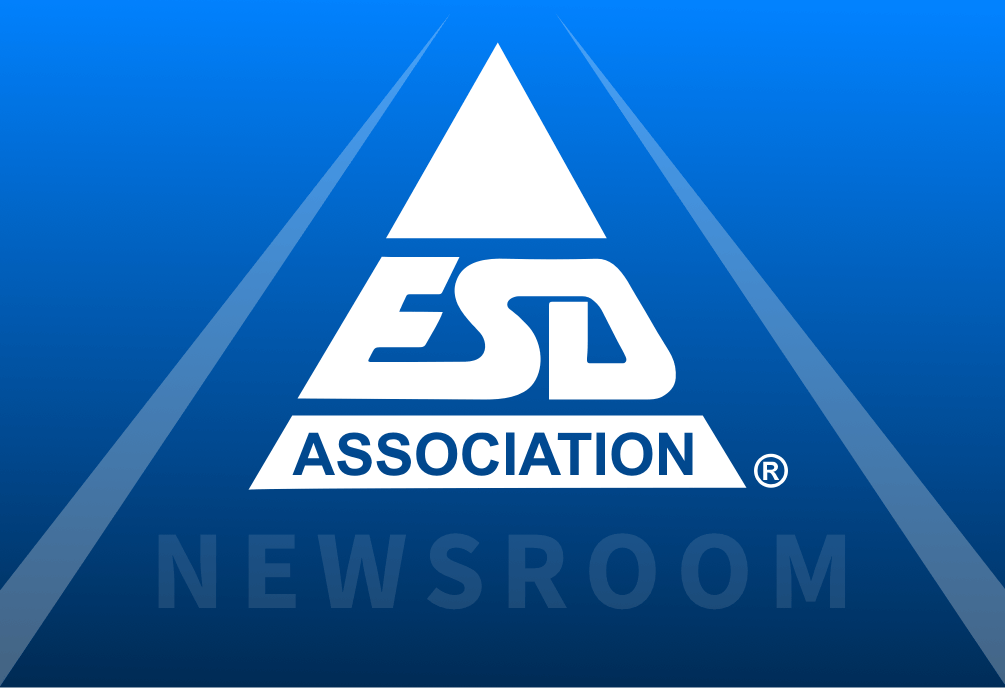EOS/ESD Association Inc. Supports Industry Council on ESD Target Levels on EOS White Paper
Contact: Lisa Pimpinella, Executive Director, EOS/ESD Association, Inc. lpimpinella@esda.org, (315) 339-6937
ROME, NY – EOS/ESD Association (ESDA), Inc. Announces its Support of the Findings and Conclusions of “White Paper 4: Understanding Electrical Overstress – EOS” from the Industry Council on electrostatic discharge (ESD) Target Levels.
ESDA acknowledges the following critical contributions by the Industry Council:
1) EOS Definition
2) Lack of correlation between component-level ESD specification and EOS condition or EOS-related field returns.
3) Need for tighter collaboration between Integrated Circuit (IC) design, factory, and field environments, and system implementation to understand all potential EOS stimuli causes and proactively implement mitigation strategy.
Based on the above, ESDA does not see a need for further research on co-design between component-level ESD and EOS risk in the field.
Executive Director, Lisa Pimpinella of EOS/ESD Association, Inc. said, “The purpose of White Paper 4 was written by the Industry Council with the intent to provide a comprehensive understanding of the definition of electrical overstress (EOS), its importance to the industry, and what measures can be taken to mitigate EOS damage to integrated circuits, as well as to products and systems. On behalf of the EOS/ESD Association, Inc., these solutions will benefit those IC design, factory, and field environments which ultimately improve production efficiencies.”
Historically, it has been recorded that the leading cause of returns in integrated circuits and systems that have failed during operations were damage signatures caused by EOS. The solution to this was hindered by the preconception in the electronics industry that insufficient robustness of ESD is the primary cause of EOS. White Paper 4 conducted an industry-wide survey of 80 different companies which focused on gathering EOS problems, the importance of EOS to overall business, and methods assigned to address EOS issues. The Whitepaper studies many field returns with EOS damage signatures to establish the underlying root causes of damage and offers the respective identified solutions.
EOS/ESD Association, Inc. was founded and is located in Rome, NY in 1982, has grown to over 1400 members and volunteers, and 30+ countries, including the U.S. and Canada. Initially focusing on ESD on electronic components, the Association has expanded its reach to include areas such as textiles, plastics, microchips, web processing, cleanrooms, explosives, and graphic arts. Due to a continually changing environment, the association is chartered to expand ESD awareness through standards, development, education programs, local chapters, publications, tutorials, certifications, and symposia.
For more information about EOS/ESD Association, Inc.’s support of the findings and conclusions of White Paper 4, please refer to https://www.esda.org/esd-overview/. White Paper 4 can be accessed via the following link, https://www.esda.org/store/white-papers/product/118/industry-council-white-paper-4-understanding-electrical-overstress
For more information about EOS/ESD Association, Inc. please refer to www.esda.org, social media presences on Facebook and LinkedIn, or contact Lisa Pimpinella, Executive Director via e-mail at lpimpinella@esda.org, or call (315) 339-6937.
###
EOS/ESD Association, Inc. 218 West Court Street, Rome, NY 13440, USA
PH +1-315-339-6937 • Email: info@esda.org • www.esda.org
